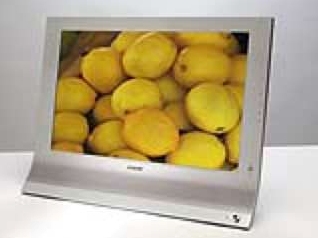TechRadar Verdict
Stellar quality all round
Pros
- +
Easy set-up
Cons
- -
Poor sound performance
Why you can trust TechRadar
Originally engineered to make laptop screens brighter while reducing their current drain, Sony's X-Black display technology has made its way onto the desktop. It's now featured in many of Sony's LCD screens, due to its dazzling brightness and contrast performance, fabulously vivid and vibrant colour, and incredibly sharp resolution. The MFM-HT205 is no exception.
Like the Samsung in our group, this Sony features a built-in TV tuner, as well as S-Video and SCART connectors, plus D-Sub and DVI-D sockets for feeds from both analog and digital PC graphics cards. Niceties like PiP and infrared remote control are all part of the package and the Sony's initial set-up procedure is quick and painless. Styling and build quality are a match for the excellence of the picture, making the Sony the most complete package in the group.
While almost every other LCD monitor on the market falls down in the sound department, the Sony's SRS WOW system makes the most of its relatively large internal speakers to provide sound quality that's actually worth listening to.
Meanwhile, an extraordinarily high 1,600:1 maximum contrast ratio and 470cd/m2 brightness make the screen look lively even across the largest of living rooms, although this can be easily tuned down for more close-up, computing work.
As well as being fully compliant with HDTV standards like 1080i and 720p, the great thing about the Sony is that it just works so brilliantly well as a top-quality PC monitor. When all is said and done, the Sony is only really worth the extra cash if built-in TV is one of your 'must-haves'. Matthew Richards
Sign up for breaking news, reviews, opinion, top tech deals, and more.
Tech.co.uk was the former name of TechRadar.com. Its staff were at the forefront of the digital publishing revolution, and spearheaded the move to bring consumer technology journalism to its natural home – online. Many of the current TechRadar staff started life a Tech.co.uk staff writer, covering everything from the emerging smartphone market to the evolving market of personal computers. Think of it as the building blocks of the TechRadar you love today.
